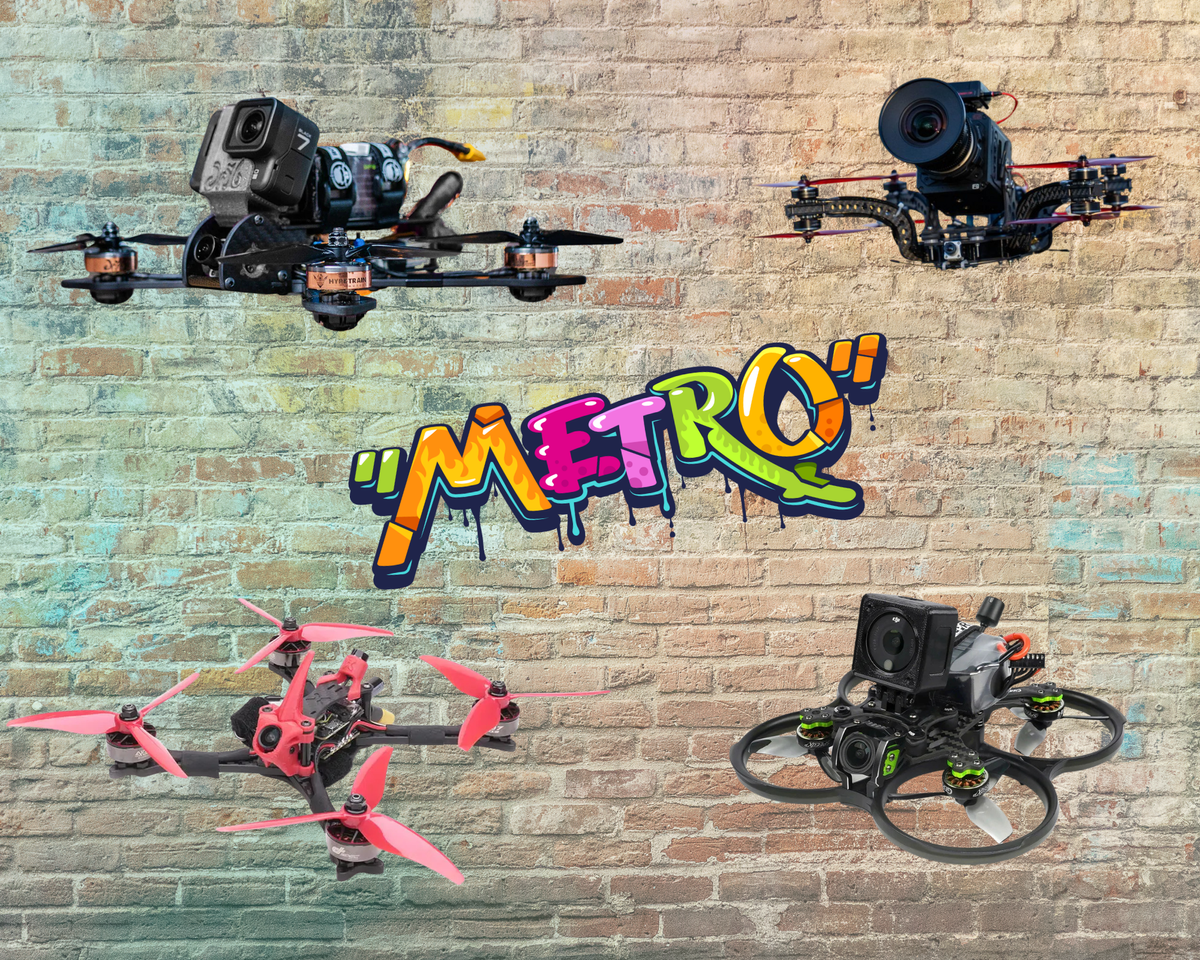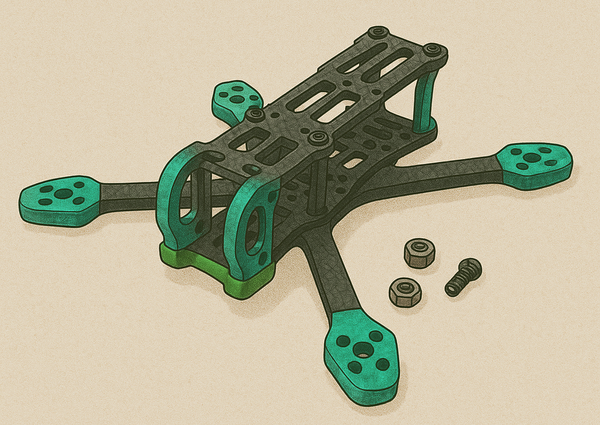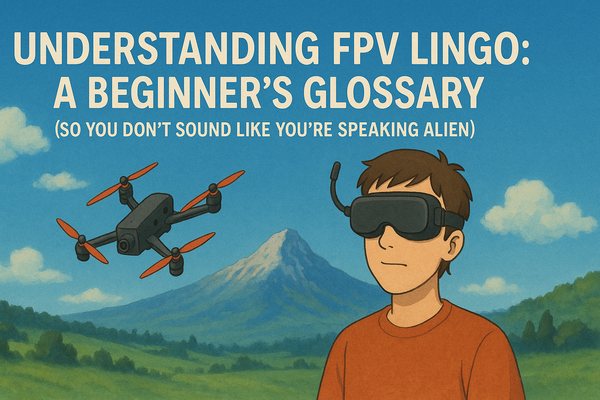The Thrill of the Chase: Exploring Different Styles of FPV Flying (Racing, Freestyle, Cinematic)


The world of drone technology has witnessed a remarkable evolution, and among its most captivating facets is First Person View (FPV) flying. This immersive experience, where pilots navigate airborne crafts through a live video feed to goggles, has surged in popularity, offering exhilarating perspectives and boundless creative potential.Within this dynamic realm, three primary styles have emerged as the most prominent: Racing, Freestyle, and Cinematic.Each discipline presents a unique approach to aerial navigation, demanding distinct skill sets, utilizing specialized gear, and catering to different passions within the FPV community. This report aims to explore these three core styles of FPV flying, delving into their defining characteristics, the equipment typically employed, and the essential skills required to master them, thereby providing a comprehensive understanding for both seasoned enthusiasts and those just beginning their FPV journey.
FPV Racing: The Thrill of Speed and Precision
At its core, FPV racing is a competitive discipline where pilots maneuver high-speed drones through complex obstacle courses, vying for the fastest completion time.These events demand not only raw speed but also exceptional agility and the ability to navigate tight turns and challenging gates with pinpoint accuracy. The essence of racing lies in pushing the limits of both pilot and machine to achieve peak performance on a designated track.

Racing drones are characterized by their ability to achieve extremely high speeds, often ranging from 80 to over 120 kilometers per hour, with custom builds even surpassing 193 kilometers per hour.This focus on velocity necessitates flight characteristics that prioritize sharp, precise turns and rapid acceleration. Pilots rely on low-latency control systems to react instantaneously to the demands of the racecourse.This emphasis on speed and immediate responsiveness often leads to a trade-off where stability is sacrificed to achieve maximum velocity. Consequently, racing drones are typically less forgiving and require a high degree of piloting skill to maintain control, especially when executing quick maneuvers at the edge of their performance envelope.This design philosophy contrasts with other FPV styles where stability or durability might take precedence.
The gear employed in FPV racing is meticulously chosen to minimize weight and maximize performance. Frames are typically constructed from lightweight carbon fiber, often in compact sizes ranging from 3 to 5 inches, to enhance agility and reduce air resistance.These frames provide a rigid yet light platform for the other components. Powering these agile machines are high-KV brushless motors, specifically optimized for rapid acceleration and the ability to reach very high revolutions per minute.These motors deliver the necessary thrust to achieve blistering speeds and quick changes in direction. The pilot's visual link to the drone is crucial in racing, and low-latency FPV cameras are essential. While analog systems have traditionally been favored for their minimal delay, digital systems are increasingly being adopted as their latency decreases and image quality improves.To further reduce weight and drag, racing builds are typically streamlined, incorporating only the essential components without unnecessary extras.Propellers play a vital role in generating thrust, and racing drones commonly utilize 3-bladed propellers with varying pitches, selected based on the drone's power and weight to optimize for speed and responsiveness.In terms of flight control, racing pilots rely exclusively on manual (Acro) flight mode, which provides direct and unrestricted control over every aspect of the drone's movement.This mode demands a high level of pilot input but allows for the precise maneuvers required in racing. Consequently, racing drones typically do not incorporate GPS or autonomous features, as the focus is entirely on the pilot's skill and ability to navigate the course.

To excel in FPV racing, pilots must cultivate a specific set of skills. Mastering throttle control is paramount, allowing for precise adjustments in speed to navigate tight sections and maintain optimal momentum.Developing lightning-fast reaction times and reflexes is crucial for navigating rapidly changing environments and executing sharp turns at high speeds.The ability to precisely maneuver the drone through narrow gates and around obstacles with consistent accuracy is a hallmark of a skilled racer.Maintaining momentum and finding the most efficient lines around the track are also critical for shaving off precious seconds and achieving faster lap times.Finally, many racers find it beneficial to increase their FPV camera angle, allowing them to see further ahead while flying at high speeds, giving them more time to anticipate and react to upcoming obstacles.
| Component | Typical Specification | Reason for Specification |
| Frame Size | 3-5 inches | Maximum agility and speed |
| Frame Material | Lightweight Carbon Fiber | Minimizes weight and maximizes responsiveness |
| Motors | High KV Brushless | Rapid acceleration and high RPMs for speed |
| Propellers | 3-Bladed, Various Pitches | Generates high thrust for quick acceleration and speed |
| FPV Camera | Low Latency (Analog/Digital) | Real-time visual feedback for immediate reactions |
| Flight Controller | High Processing Power | Quick response to pilot inputs |
| ESCs | High Amperage | Delivers necessary power to high-KV motors |
| Battery | High Discharge Rate LiPo | Provides bursts of power for acceleration |
| Flight Mode | Manual (Acro) Only | Direct and unrestricted control for precise maneuvers |
| GPS/Autonomous | None | Focus on pilot skill |
FPV Freestyle: Where Creativity Takes Flight
In stark contrast to the structured competition of racing, FPV freestyle is a discipline that celebrates creativity and self-expression through the performance of acrobatic maneuvers and tricks in the air.Freestyle pilots view the sky as their canvas, utilizing their drones to execute a wide array of stunts, from basic flips and rolls to complex dives and power loops, often in dynamic and challenging environments.The emphasis here is not on speed or finishing first, but on the pilot's ability to combine technical skill with imaginative aerial choreography.

Freestyle flying is uniquely characterized by its emphasis on agility and maneuverability, allowing pilots to execute intricate and often gravity-defying stunts.Durability is another key characteristic, as the nature of learning and pushing the boundaries of what's possible often results in frequent crashes.Unlike racing, which adheres to defined tracks, freestyle offers the freedom to fly in virtually any environment, limited only by the pilot's imagination and the capabilities of their drone.This unrestricted nature fosters a culture of experimentation and innovation, where pilots constantly strive to develop new and more challenging tricks. The acceptance of crashes as an inherent part of the learning process distinguishes freestyle from racing, where avoiding collisions is paramount. In freestyle, crashes are seen as opportunities to learn the limits of both the pilot and the equipment, encouraging a mindset of resilience and continuous improvement.
The gear used in FPV freestyle reflects the demands of this dynamic flying style. Frames are typically robust, often featuring replaceable arms to facilitate quick repairs after crashes, and are designed to absorb impacts and protect the internal components. Medium-sized frames, generally ranging from 5 to 7 inches, strike a balance between control and durability, making them popular choices for freestyle pilots.Powerful motors with high thrust are essential, enabling the drone to quickly recover from dives and to perform the dynamic maneuvers that define freestyle.High-definition action cameras, such as GoPros or DJI cameras, are commonly mounted on freestyle drones to capture the impressive stunts in high quality for sharing and analysis.Propellers used in freestyle are often designed to be durable enough to withstand minor impacts, although frequent breakage is still expected given the nature of the flying.Similar to racing, manual (Acro) flight mode is preferred in freestyle, as it provides the unrestricted control necessary for executing complex tricks with precision.Freestyle pilots also typically do not rely on GPS, preferring full manual control to have complete authority over the drone's movements during stunts.

Mastering FPV freestyle requires a high level of proficiency in Acro (manual) mode, giving the pilot complete command over the drone's pitch, roll, yaw, and throttle.A freestyle pilot's skill is often judged by their repertoire of tricks, which can range from fundamental rolls and flips to more advanced maneuvers like dives, power loops, and intricate combinations involving yaw spins and intentional ground skids.Developing strong spatial awareness is crucial for maintaining orientation during complex maneuvers and for recovering from near-crashes.Understanding momentum and how to manipulate it is also key to executing tricks smoothly and with style.Beyond technical skill, freestyle emphasizes experimentation and pushing personal limits to develop unique and innovative flying styles that reflect the pilot's individual creativity.Many experienced freestyle pilots describe a state of "flow," where their movements become intuitive and fluid, almost like an extension of their own body. This connection between pilot and drone allows for expressive and dynamic aerial performances.
FPV Cinematic: Painting the Sky with Smooth Shots
Shifting gears from the high-octane world of racing and the acrobatic artistry of freestyle, FPV cinematic flying focuses on the art of capturing smooth, high-quality aerial video footage for storytelling and visual appeal.The goal of cinematic FPV is to mimic the fluid movements and compelling perspectives often seen in traditional filmmaking, leveraging the unique agility of FPV drones to achieve shots that would be difficult or impossible with other methods. This style prioritizes visual aesthetics and narrative impact over breakneck speed or radical stunts.

Cinematic FPV is uniquely characterized by its focus on stable and controlled flight, which is essential for capturing smooth and professional-looking camera work. Pilots aim to achieve compelling and often unique aerial perspectives, frequently flying close to objects, through tight spaces, or in dynamic environments to create a sense of immersion and visual interest. The emphasis is on video quality and smooth motion, often at the expense of extreme speed or aggressive acrobatics, which might detract from the desired cinematic feel. The increasing integration of FPV drones into professional filmmaking highlights the growing recognition of this style's unique capabilities in capturing dynamic and immersive shots that traditional equipment cannot easily replicate. Whether it's swooping through a bowling alley or chasing a speeding car , cinematic FPV offers a novel way to tell stories visually.
The gear typically used for cinematic FPV is chosen to prioritize stability and video quality. Larger and more stable frames, often 7 inches or bigger, are common, and "dead cat" configurations, where the front arms are extended to keep the propellers out of the camera's view, are frequently used. Additionally, smaller, ducted drones known as "cinewhoops" have gained popularity for indoor or close-proximity cinematic work, offering increased safety and maneuverability in confined spaces. High-definition cameras are a must, with popular choices including GoPros, DJI cameras, and even specialized cinema cameras mounted on larger "cinelifter" drones for professional productions. Digital FPV systems, such as DJI or Walksnail, are generally preferred over analog for their clear, high-quality video feeds, which are crucial for framing shots accurately. To enhance stability and achieve smoother flight, especially with larger drones, GPS and altitude hold features are often incorporated. Furthermore, gimbals (2- or 3-axis) or advanced in-camera stabilization systems are frequently used to eliminate unwanted vibrations and ensure ultra-smooth footage, particularly when carrying heavier cameras. Neutral Density (ND) filters are also commonly employed to control motion blur and exposure, contributing to a more cinematic aesthetic.
Mastering cinematic FPV requires a distinct set of skills. Pilots must develop the ability to execute smooth and controlled flight in Acro mode, emphasizing gentle stick inputs to avoid any jerky or abrupt movements that could compromise the shot. Meticulous planning and scouting of flight paths are essential to effectively capture interesting subjects and perspectives, ensuring that the drone's movement complements the visual narrative. A thorough understanding of camera settings, including frame rate, shutter speed, ISO, and color profiles, is crucial for achieving the desired cinematic look and managing motion blur effectively. Proficiency in flying close to objects and through tight spaces while maintaining smoothness and precise control is a hallmark of a skilled cinematic pilot, allowing for dynamic and immersive shots. Knowledge of basic cinematography principles, such as utilizing leading lines, creating reveals, and employing effective framing, can significantly enhance the storytelling potential of the aerial footage. Awareness of lighting conditions, particularly the benefits of flying during the "golden hours" around sunrise and sunset, can dramatically improve the visual quality of the footage. Finally, post-production skills, including color correction, grading, and sound design, are often employed to further refine the footage and create a truly cinematic viewing experience. The emergence and increasing popularity of "cinewhoops" represent a specific and growing niche within cinematic FPV, focused on safety and the ability to capture smooth, stable footage in tighter, more confined environments, including indoors and in close proximity to people.
Side-by-Side Analysis: Key Differences in a Nutshell
| Feature | Racing | Freestyle | Cinematic |
| Core Purpose | Competition, fastest time on a course | Creativity, acrobatic tricks, self-expression | Capturing smooth, high-quality aerial video for storytelling |
| Typical Flying Style | Fast, precise turns, quick acceleration, low latency control | Flips, rolls, dives, creative maneuvers, emphasis on agility and skill | Stable, slow, controlled movements for smooth video capture |
| Typical Drone Build | Lightweight, compact (3-5 inch), high-KV motors, low-latency camera | Robust (5-7 inch), powerful motors, HD action cameras, durable propellers | Larger, stable (7 inch+ or cinewhoop), HD cameras, digital FPV, GPS, stabilization |
| Essential Skills | Throttle control, quick reflexes, precise maneuvering, momentum | Acro mode proficiency, mastery of tricks, spatial awareness, momentum, creativity | Smooth Acro flight, flight path planning, camera settings, close proximity flying, cinematography |
My Personal Take: Finding Your Niche in the FPV Universe
Having spent a considerable amount of time exploring the skies through the lens of an FPV drone, I've come to appreciate the unique allure of each of these styles. Initially, the adrenaline-pumping speed and tight competition of racing drew me in. There's a certain satisfaction in pushing yourself and your machine to the absolute limit, shaving milliseconds off lap times, and battling it out with other pilots on a challenging course. However, as my skills developed, I found myself increasingly drawn to the boundless creativity of freestyle. The freedom to experiment, to link together seemingly impossible maneuvers, and to express myself through the movement of the drone has become incredibly rewarding. More recently, I've also begun to explore the art of cinematic FPV. There's a different kind of satisfaction in capturing a truly stunning aerial shot, one that tells a story or evokes a particular feeling. The challenge of mimicking traditional cinematic techniques with the unique perspective of an FPV drone is a compelling one.
What I've come to realize is that the beauty of FPV lies in its versatility. Many pilots, myself included, find enjoyment in various aspects of these styles. There's no rulebook that says you have to choose just one. You might find yourself racing one weekend, practicing freestyle the next, and then spending an afternoon capturing cinematic footage of a breathtaking landscape. The skills learned in one discipline often complement the others. For instance, the precise throttle control honed in racing can be invaluable for smooth cinematic shots, while the spatial awareness developed in freestyle can help navigate tight gaps in a race. The FPV community is also incredibly diverse, with different groups often gravitating towards specific styles. However, there's a strong sense of camaraderie across all disciplines, with pilots sharing tips, knowledge, and a common passion for flight.
Conclusion: The Sky's the Limit for FPV Enthusiasts
The world of FPV drones offer a rich tapestry of experiences, with racing, freestyle, and cinematic emerging as its three distinct and captivating threads. Each style presents a unique set of challenges and rewards, catering to different aspirations and skill sets within the FPV community. The adrenaline-fueled competition of racing demands precision and lightning-fast reflexes. The creative freedom of freestyle invites pilots to push the boundaries of aerial acrobatics and self-expression. The artistic pursuit of cinematic FPV focuses on capturing breathtaking and immersive aerial footage for storytelling. Ultimately, the best way to discover your own passion within the FPV universe is to explore and experiment with each of these styles. Whether you're drawn to the thrill of speed, the joy of creative flight, or the art of aerial cinematography, the sky truly is the limit for FPV enthusiasts.




